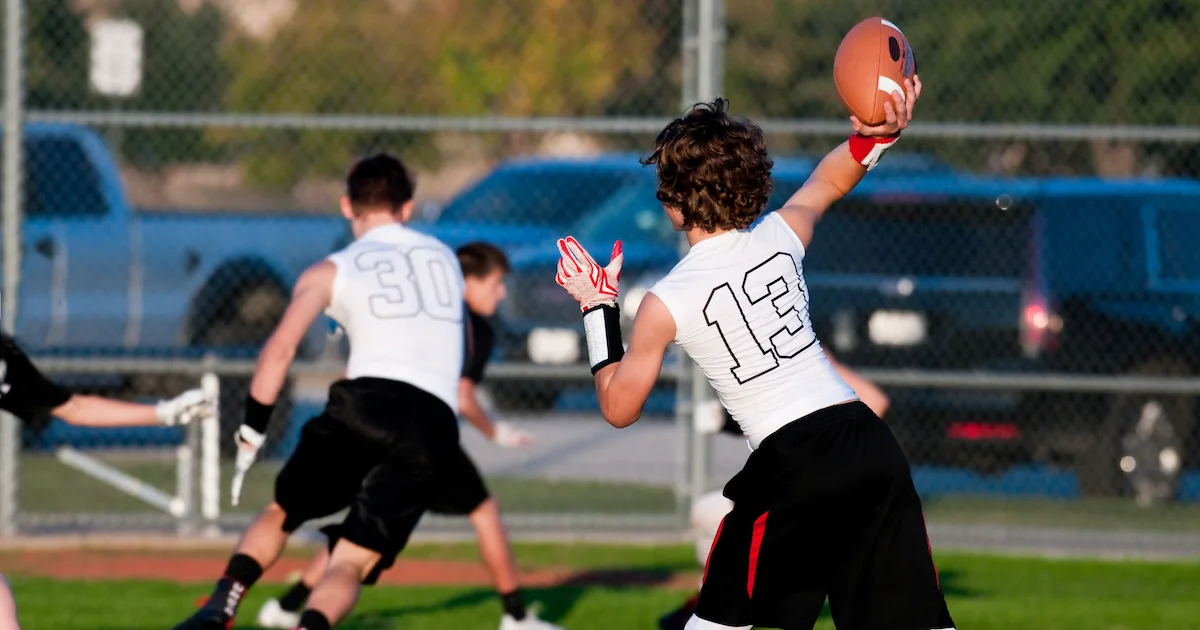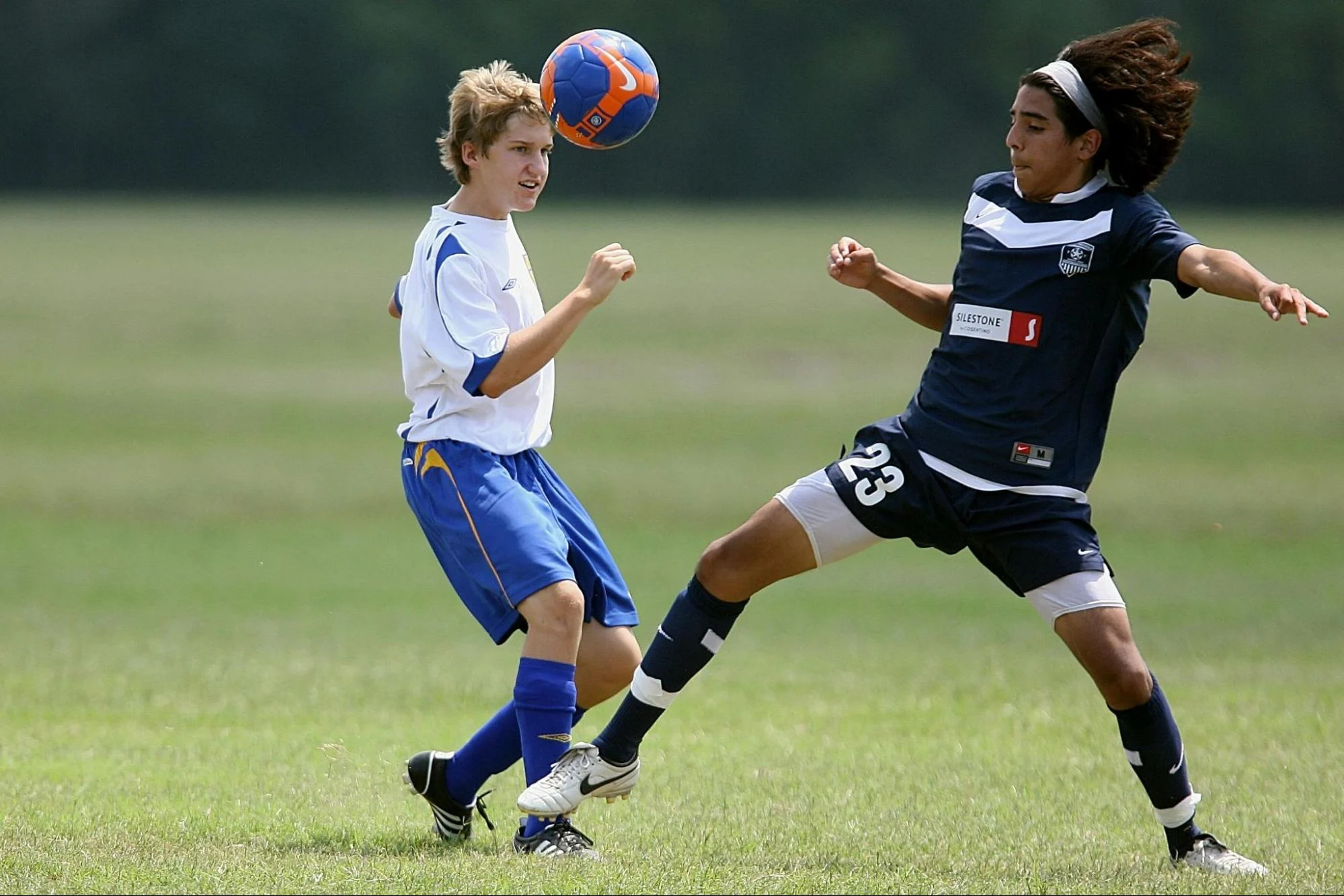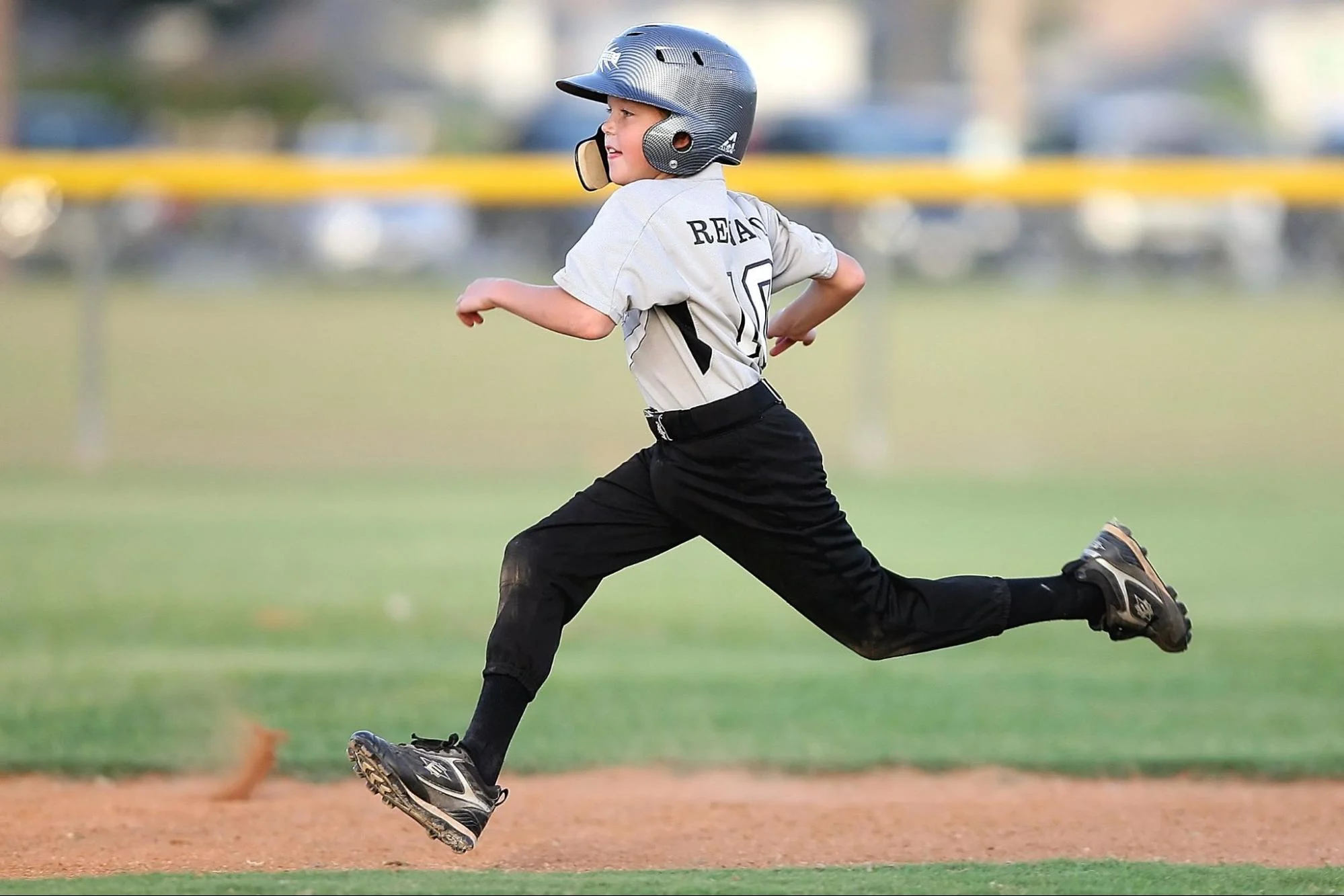
There are endless benefits to youth sports participation, but every rose has its thorn. Many sports can still cause injuries if players, parents, and coaches aren’t aware of how to keep their players safe.
To help safeguard against serious sports injuries, we’ve put together this guide on youth sports safety. Read on to learn more about how physical exams can help set kids up for success, several injury prevention strategies, common youth sports injuries, and more.
The importance of pre-participation physical exams
A pre-participation physical exam or evaluation, also known as a PPE, is an important step for young athletes to take before they get started with any youth sports. PPEs are performed by your child’s pediatrics doctor and evaluate your child’s overall health and if they’re at risk for injury while playing sports.
Some components of the PPE may include:
- Medical and family history
- Physical examination/screening
- Medications taken
- Nutritional evaluation
- Heat and hydration risk factors
- Mental health assessment
Going into sports blindly, without evaluating a child’s risk factors, can set them up for being at higher risk of injury throughout the season. This is why PPEs can be so valuable for children, teens, and young adults before they begin a new sports season.
Not every league requires a PPE at this point, but it’s recommended to make this common practice as an injury prevention method.
Injury prevention strategies
Other than a pre-participation physical exam, there are a few other injury prevention strategies and sports safety tips that parents, coaches, and league commissioners can keep in mind.
Stretching before practices and games
Stretching is always an important warmup step before practices and games. Stretching helps to release muscle tension and give players more range in their movements. Without stretching, muscles can become tight, putting players at risk for muscle strains and damage.

Staying hydrated
Parents and coaches should always make sure that players have a water bottle and access to water breaks throughout practices and games. Staying hydrated helps players regulate their body temperatures and avoid dehydration and negative effects from heat.
Regular rest and recovery
Players need regular rest and recovery to prevent overuse injuries. Coaches need to pay attention to how long youth athletes are playing. Many leagues have rules about how long players can stay in to avoid potential injuries.
Another way parents can help is by giving players breaks between sports or seasons so they take turns using different muscles and movements in each new sport they play.
Proper nutrition
A balanced diet can help maintain energy levels and overall health. Parents, pay attention to how your youth athlete is eating, especially right before a practice or a game. The right nutrients can help player growth and energy levels, ensuring they’re at their best each game.
Sportsmanship and fair play
Good sportsmanship and fair play are also key in avoiding injuries. Ensuring referees are well-versed in the rules and can adequately respond to unfair tackles helps minimize potential injuries. Make sure all players fully understand the rules so they aren’t causing harm to their fellow players. Emphasizing teamwork can also help reduce injuries.
Equipment safety
The next step in preventing sports-related injuries is ensuring all players have a clear understanding of how to—and how not to—use the sporting equipment.
Importance of proper equipment
If players didn’t wear the proper safety equipment in sports like tackle football, they’d be at extremely high risk of getting injured. The same goes for if any of their safety equipment isn’t being worn properly.
Equipment like shoulder pads in football, shin guards in soccer, and helmets in baseball are all designed to keep the players safe while they play.
However, improperly fitting gear or gear that isn’t sanctioned by the league can leave players at risk. This is why it’s important to ensure your league has comprehensive guidelines that share:
- All required equipment
- Sizing guidelines for players
- Brands that are league accepted
- How to make sure equipment (i.e., helmets, pads) fits properly
- How to properly use equipment
Athletes also need to be well-informed of potential injuries that their safety equipment is trying to prevent, like concussions or sprained ankles. This can help the players be more aware as they play of what types of injuries to avoid.
Equipment quality and accessibility
Another important aspect of equipment is its quality. Pre-used equipment won’t always work well for proper safety measures. For example, helmets may need to be properly certified to be up to league standards. If a helmet is two years old, it either needs to be replaced or reconditioned and recertified to make sure it can be used and is up to standards.
However, many families who want their children to participate in youth sports can’t always afford the cost of new equipment. Leagues should look into youth sports grants that can help make high-quality equipment more accessible for all participants.
Having the proper gear that’s of certified quality helps reduce potential injuries by keeping players safe and sound.

Common injuries in youth sports
There are a few common injuries you’ll see in youth sports. Knowing what to expect can help you better prepare against these injuries.
Wrist injuries
Wrist injuries can be common in young athletes as they fall often. One of the most common wrist injuries is called “FOOSH,” or “fall on outstretched hand,” and happens when a child puts their hand out in front of them to brace their fall.
If your child or a player on your team has fallen on their hand and are complaining of wrist pain, make sure they’re seen by a doctor ASAP to assess the extent of the damage. Fractures may need a splint or even a cast depending on the severity.
Ankle sprains
Another common injury type is a sprained ankle. This can occur when the ankle is forced to move out of its natural position and the ligaments supporting it stretch and tear. This type of injury is common in sports where players may be turning on the field/court quickly, causing the ankle to twist unnaturally.
These are typically minor injuries that can be treated at home using the RICE method:
- Rest
- Ice
- Compression
- Elevation
However, if the pain and swelling don’t seem to go away, make sure the child is seen by the doctor in case the ankle has been fractured or requires a cast to keep it in place.
Little League shoulder/elbow
Little League shoulder or Little League elbow are two different types of injuries that are common in Little League pitchers. Little League shoulder is more prevalent in 11-16 year olds while Little League elbow can occur in players aged 8-15.
Both injuries come from the repetitive motion of pitching, just how pitcher’s arm or elbow can affect adult players. Make sure your child’s pitching form is correct, and ensure no player is pitching for too many innings or games in a row to properly allow their arms to rest.
ACL tears
The ACL, or anterior cruciate ligament, is a ligament in the knee that connects the thigh bone to the shinbone. ACL tears can occur from a sudden stop, pivot, impact, or blow to the knee. Sometimes ACL tears are accompanied by a meniscus injury.
These injuries can lead to pain, swelling, and limited use of the knee. An ACL tear is a serious injury that requires surgery and nine or more months of recovery to fix. Strength training geared towards the hamstrings, hips, and core can work wonders for reducing this type of injury.
Shin splints
Shin splints are microtears in muscle and bone tissue that are caused by repetitive stress on the shinbone, like prolonged running on a hard surface or overtraining. Shin splints lead to pain in the shin area and can be treated with rest, icing, and pain relievers.
This type of injury can be prevented through proper stretching before training and a gradual uptick in exercise. Rest is required or shin splints can lead to stress fractures.
Osgood-Schlatter
Osgood-Schlatter disease refers to a childhood injury that can occur from ages 10-14. This is an overuse injury that causes a bump and swelling under the knee and at the top of the shinbone. Often caused by overuse during puberty growth spurts, this injury can be treated with rest and ice, but often won’t fully go away until the child is done growing.
Sever’s disease
Sever’s disease, a common form of heel pain in young people, is caused by inflammation of the Achilles tendon. It often presents in young boys who play sports where their heel has a lot of ground contact, especially if they have to wear cleats.
Sever’s disease can last for six months up to two years and is treated by icing, doing calf stretches, or using gel heel inserts for pain relief.
Fractures
Fractures are a general risk of any physical activity, especially if there is any type of contact on the playing field. A fracture is a type of musculoskeletal injury and can generally be diagnosed by limited movement, inability to put weight on the bone, or swelling and bruising around the affected area.
If a fracture is suspected, the athlete should be seen by a doctor to get an x-ray and a cast. They will need to take a break from the sport until the cast is removed and a doctor or athletic trainer has cleared them for play.
Spondylolysis
Spondylolysis is a stress fracture that occurs in the lumbar spine and often presents in athletes that play sports like tennis, track and field, gymnastics, or weightlifting. This injury occurs due to repeated stress on the spine.
While no major medical attention is needed, the player will need to rest for 6-12 weeks and may need physical therapy. A medical provider specializing in sports medicine may be able to advise the proper recovery protocol for an injury like this.
Turf toe
Turf toe is a toe sprain that occurs due to hyperextension of the big toe when the foot is being forcefully pressed off the ground. This happens often in sports like football or track and field and can cause pain and swelling in the toe.
This type of injury can take 2-4 weeks to heal and can also be treated using the RICE method (rest, ice, compression, elevation).
Concussion
A concussion is a head injury that occurs due to a direct blow to the head, and unfortunately is a rather common sports injury in adolescents. The treatment for most concussions is rest, but your child should still be seen by a doctor to ensure that further brain damage hasn’t occurred.
Symptoms of a concussion include a headache or pressure in the head, nausea or vomiting, dizziness, double vision, sensitivity to light or noise, and fatigue. Others may notice memory problems or an inability to focus.
Role of coaches and parents in promoting safety
Both parents and coaches have a role in ensuring there are safe kids at every sporting event. Many high schools even keep a sports medicine professional on staff to ensure their student athletes are getting the proper attention and health care throughout the season.
Parents need to stay informed about potential risks and injuries so they can make sure their children are getting the proper rest, have the proper equipment, and have access to the proper care.
Coaches also need to ensure they’re giving their players adequate breaks during practices and games to promote wellness and avoid overextending any of their players.
Prioritize youth sports safety in your league
Youth sports safety is also important to keep in mind as a league manager. Best practices for managing a sports league include putting the players’ safety at the forefront and creating policies that ensure no player is getting too much time on the field and putting themselves at risk.
Place your policy and other safety tips right on your league website. Jersey Watch makes it easy to create a league website that shares all of the most important information for both parents and coaches to know.